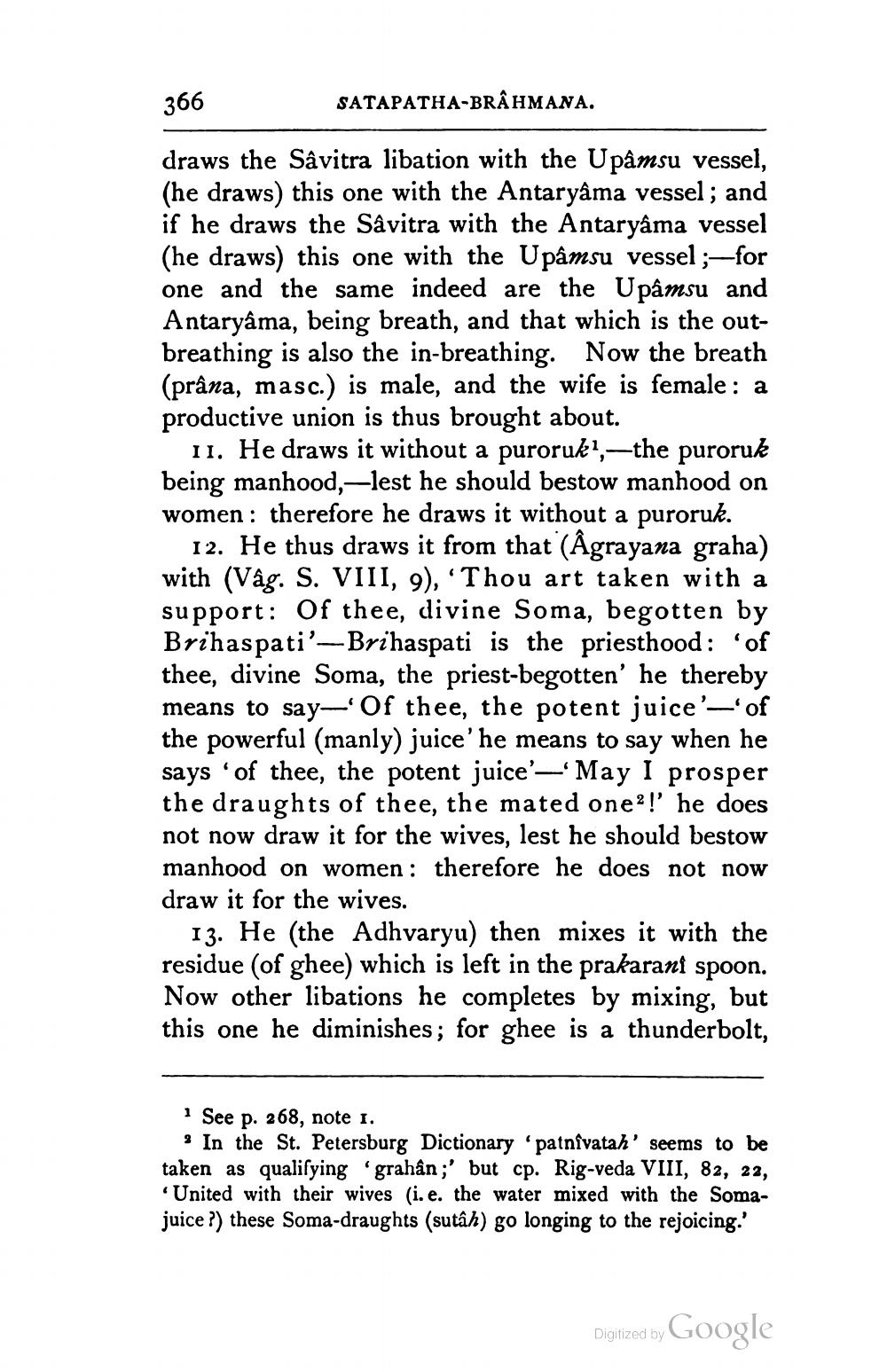________________
366
SATAPATHA-BRAHMANA.
draws the Sâvitra libation with the Upâmsu vessel, (he draws) this one with the Antaryâma vessel; and if he draws the Savitra with the Antaryâma vessel (he draws) this one with the Upâmsu vessel ;-for one and the same indeed are the Upâmsu and Antaryâma, being breath, and that which is the outbreathing is also the in-breathing. Now the breath (prâna, masc.) is male, and the wife is female : a productive union is thus brought about
11. He draws it without a puroruk»,—the puroruk being manhood,-lest he should bestow manhood on women: therefore he draws it without a puroruk.
12. He thus draws it from that (Âgrayana graha) with (Vâg. S. VIII, 9), 'Thou art taken with a support: Of thee, divine Soma, begotten by Brihaspati'-- Brihaspati is the priesthood: 'of thee, divine Soma, the priest-begotten' he thereby means to say—' Of thee, the potent juice'-'of the powerful (manly) juice' he means to say when he says of thee, the potent juice' - May I prosper the draughts of thee, the mated one?!' he does not now draw it for the wives, lest he should bestow manhood on women: therefore he does not now draw it for the wives.
13. He (the Adhvaryu) then mixes it with the residue (of ghee) which is left in the prakarani spoon. Now other libations he completes by mixing, but this one he diminishes; for ghee is a thunderbolt,
See p. 268, note 1. * In the St. Petersburg Dictionary patnivatah' seems to be taken as qualifying 'grahân;' but cp. Rig-veda VIII, 82, 22, United with their wives (i.e. the water mixed with the Somajuice ?) these Soma-draughts (sutâh) go longing to the rejoicing.'
Digitized by Google




